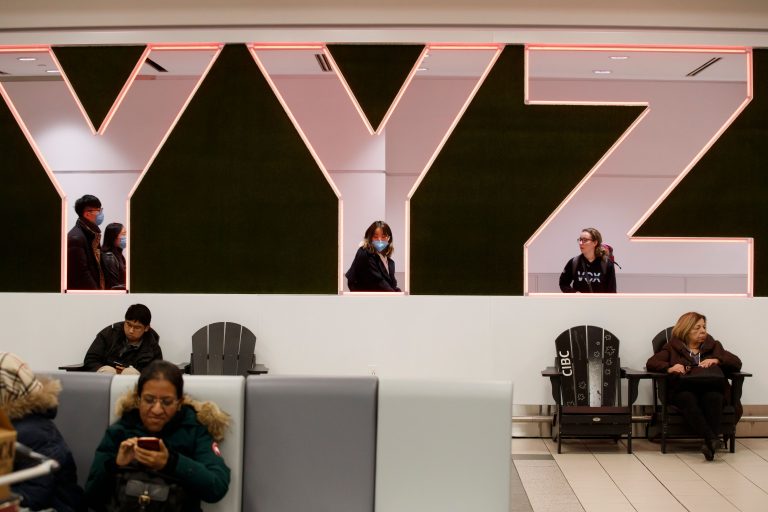Health care professionals are raising the alarm about deteriorating conditions in Canadian hospitals leading experts to conclude that the system is on the verge of collapse or is already collapsing.
Dr. Katharine Smart, president of the Canadian Medical Association (CMA) told CTV News on June 15 that, “What’s clearly coming is the collapse of the current health care system,” and that there doesn’t appear to be any political will “to take it seriously.”
“There doesn’t really appear to be any near solutions in the near term, which is really worrisome,” she said adding that, “And right now what we have is hundreds of thousands of Canadians suffering in very real ways, in pain, unable to get services and waiting in lines in emergency departments unable to get a family doctor. The system is collapsing around us.”
The COVID-19 pandemic has placed considerable strain on Canada’s health care system and the issues are showing no signs of abating, leading Smart to warn that the problems currently being experienced may actually get worse.
Smart is warning that “pressure across the system” is dire, the surgical queue is ballooning, emergency rooms are swamped and there are ongoing challenges with primary care.
Compounding problems
Success
You are now signed up for our newsletter
Success
Check your email to complete sign up
According to Smart, Canada’s health care system is experiencing a surge in patient volume due to a number of viruses circulating in the population, not just COVID-19.
Compounding the problem is a severe shortage in staff as COVID-19 measures keep them home. “We are seeing a lot of staff off sick,” Smart told CTV News, which is resulting in huge backlogs of patients “that are presenting to care that have medical concerns that have been neglected during the pandemic,” she said.
Patients who avoided doctor’s offices and emergency rooms during the pandemic are now swamping the system and are presenting with more advanced disease which require more resources.
In addition, Smart warns that primary care — care received by a family doctor — is worsening, with doctors fleeing family practice giving patients no choice but to show up in Canada’s emergency rooms.
“So all those things are adding up to huge pressures on our emergency departments,” she said.
100’s of thousands of delayed procedures
According to CTV News, 700,000 medical procedures were delayed during the pandemic and there were 600,000 fewer surgeries performed in the first 22 months of the pandemic compared to 2019.
When asked how long these delays will last Smart responded, “Well, what I think what we are seeing is that people are projecting, you know, years to catch up this backlog, because of course patients are still coming. So this queue is getting longer, not shorter.”
“It’s going to take significant resources to of course be able to address these two things simultaneously and make sure we are getting through that backlog of patients,” she said.
Smart said that what may surprise Canadians the most is that children are experiencing the highest wait times to receive health care. “They [children] have the longest waits for everything,” she said, including medical imaging, surgeries, mental health, and wait times in emergency departments, leading Smart to conclude that children are the most impacted by the chaos.
READ MORE:
- Was Justin Bieber’s Facial Paralysis Caused By the COVID Vaccine?
- New York City Holds Its First ‘Long COVID’ Symposium
- Could Beijing;s COVID restrictions Lead to Mass Protests?
‘It’s absolutely horrific’
In Ontario, where an estimated 13.6 million Canadians reside, health care workers are saying that emergency rooms are “exploding.”
“It’s absolutely horrific. There are not other words to describe it,” Angela Preocanin of the Ontario Nurses Association (ONA), told Global News.
“We have hospitals in the GTA (Greater Toronto Area) that are running at 60 percent staff and a 300 to 400 percent capacity,” she said.
The ONA is saying that there are several issues driving the chaos in emergency rooms, including capacity issues that existed well before the pandemic.
Dr. Kashif Pirzada, a Toronto emergency room physician, told Global News that many of the patients swamping emergency rooms are looking for specialist referrals and other non-urgent medical intervention that is adding to the crunch.
“You have people who have issues that are urgent to them. They’re not exactly emergencies but they’re just falling through the cracks. Someone who has a joint issue, they can’t see anyone about it … They come to us for help,” he said.
The backlog is driving what ONA calls “hallway health care” where patients are being treated in non-traditional areas of the hospital, such as storage rooms and auditoriums, while paramedics wait hours to offload patients in need of urgent care.
“Patients can’t be transferred into beds because there are no beds on the floors, so on the units they open up patient lounges, and they start caring for patients in the lounges,” Preocanin told Global News.

Nurses overwhelmed
Of particular concern for the ONA is an ever-growing ratio of nurses to patients. Some nurses have a patient load of around 30 patients concurrently, a far cry from the recommended nurse-to-patient ratio of 1:5.
France Gelinas, who served as the NDP’s health critic before Canada’s recent election, told Global News, “There is no place in health care for one nurse to be with 30 patients. You will never be able to provide quality care with ratios like this.”
While the provincial government is attempting to address the issue by adopting measures designed to retain nursing staff, create new hospital beds and build or upgrade hospitals, front-line health care workers are clamoring for an immediate strategy that will deliver some relief now.
Pirzada said that Canada’s health care system is not designed to handle constant strain and warned that current conditions will lead to more burnout among health care workers who are already bracing for another surge of COVID-19 this fall.
“The real test will be in the fall when people go back indoors, when we see another COVID season again, another flu season again,” he told Global News, adding that, “I’m really afraid to see what will happen then.”













